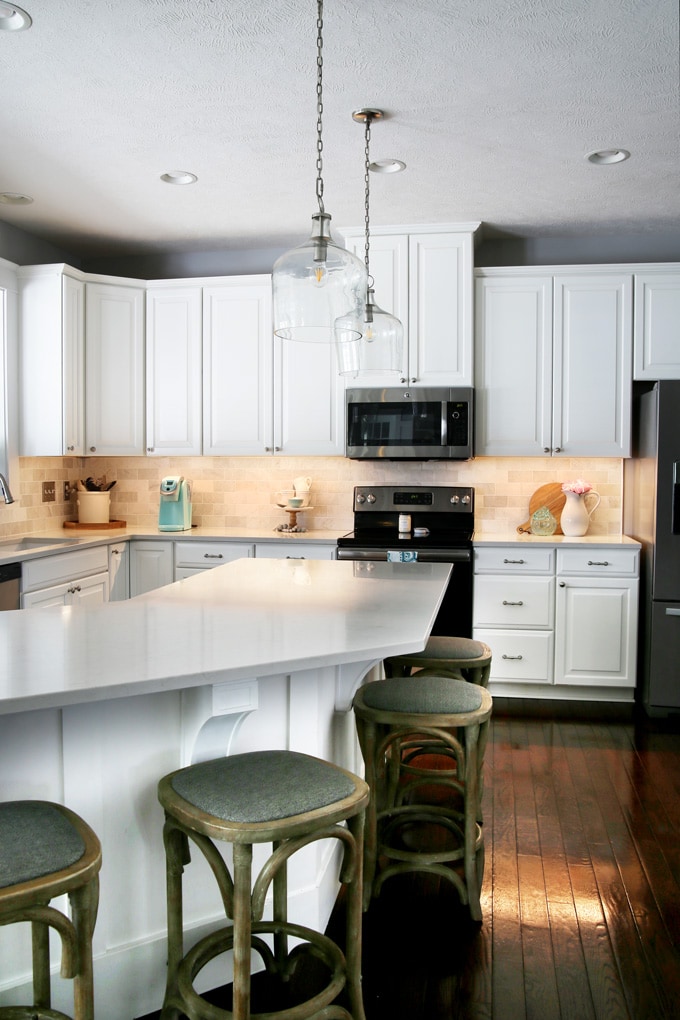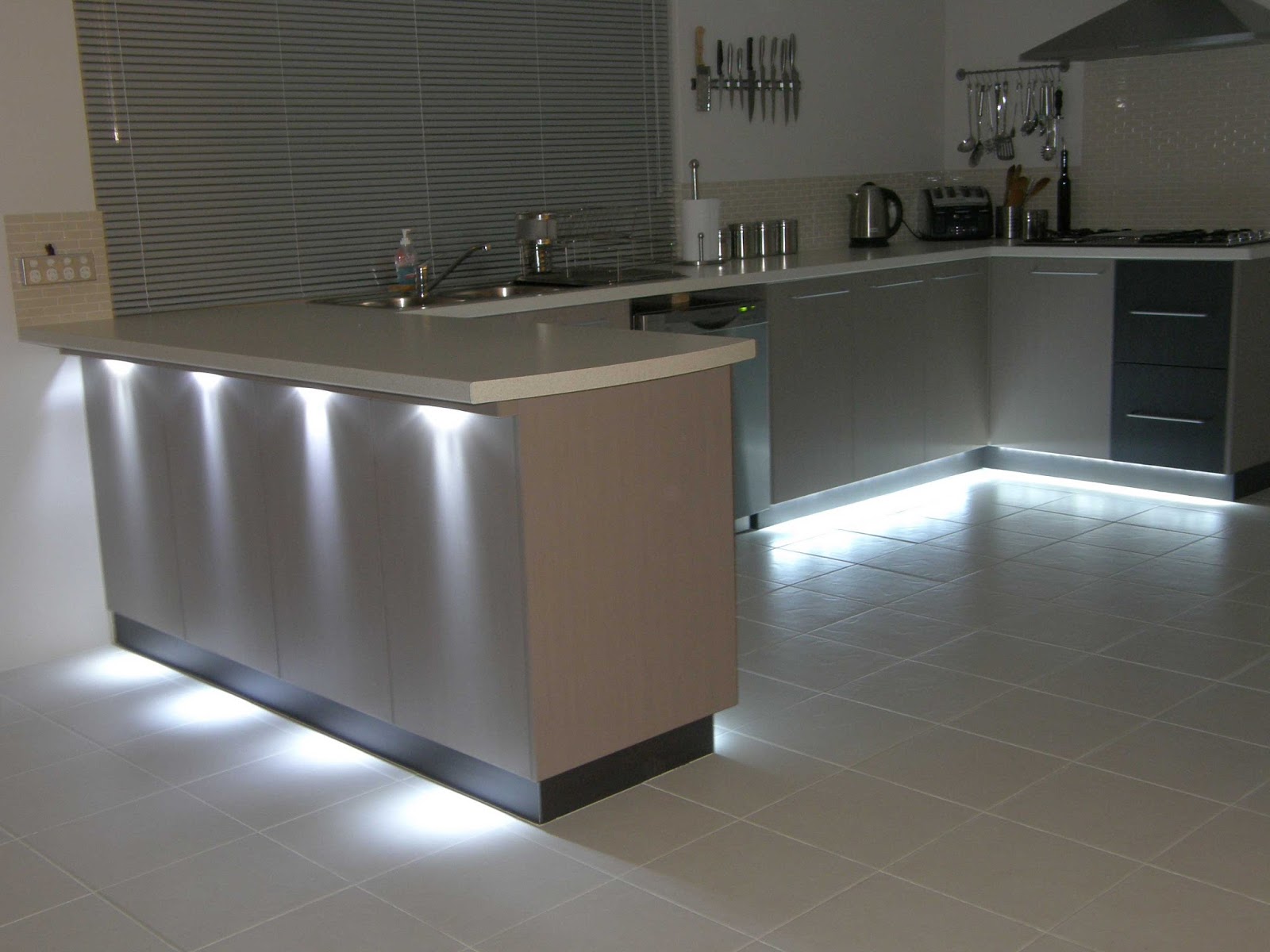LED light not working in kitchen
If you've recently noticed that your LED kitchen light is not working, you're not alone. This is a common problem that many homeowners face and can be frustrating when you're trying to prepare a meal or entertain guests in your kitchen. But before you call an electrician or rush to replace the light, there are a few troubleshooting steps you can take to try and fix the issue.
How to fix LED kitchen light
First, check to make sure that the light is properly connected to the power source. Sometimes, loose connections can cause the light to stop working. If the connection seems secure, then it's time to check the light switch. If the switch is faulty, it may need to be replaced. You can also try turning the switch on and off a few times to see if that helps.
Troubleshooting LED kitchen light
If the light still isn't working, it's time to troubleshoot the actual light fixture. Start by checking the bulbs. Make sure they are screwed in tightly and not burned out. If the bulbs are fine, then check the wiring inside the light fixture for any loose or damaged connections. If everything looks good, then the issue may be with the LED driver, which is responsible for converting the electricity to power the LED lights.
LED kitchen light not turning on
If your LED kitchen light is not turning on at all, it's likely that the power source is the problem. Check the circuit breaker to make sure the switch is in the "on" position. If it keeps tripping, there may be an overload or short circuit in the wiring. In this case, it's best to call a licensed electrician to fix the issue.
Replacing LED kitchen light
If all else fails, you may need to replace the LED kitchen light altogether. Before purchasing a new light, make sure to check the specifications and compatibility with your existing wiring and power source. You may also want to consider upgrading to a higher quality LED light that will last longer and provide better lighting for your kitchen.
LED kitchen light flickering
One common issue with LED lights is flickering. This can be caused by a few different factors, including a loose connection, faulty driver, or incompatible dimmer switch. First, check the connections and make sure they are secure. If that doesn't solve the issue, try replacing the driver or switching to a compatible dimmer switch specifically designed for LED lights.
LED kitchen light not bright enough
If you feel like your LED kitchen light is not bright enough, you may need to adjust the settings on the LED driver. Most drivers have a setting to adjust the brightness, so check the manual or contact the manufacturer for instructions. You can also consider adding more lights to your kitchen or upgrading to higher wattage bulbs for a brighter effect.
LED kitchen light not dimming
On the other hand, if your LED kitchen light is not dimming, it may be due to an incompatible dimmer switch. LED lights require a special type of dimmer switch, so make sure you have the correct one installed. If the switch is compatible, then the issue may be with the driver or wiring. In this case, it's best to seek professional help to fix the issue.
LED kitchen light not responding to remote
If your LED kitchen light is controlled by a remote, it may not be responding due to a dead battery or a faulty remote. Try replacing the battery first and see if that solves the issue. If not, then the remote may need to be replaced. You can also try resetting the light and remote by turning off the power and turning it back on after a few minutes.
LED kitchen light not connecting to WiFi
Many newer LED lights come with WiFi connectivity, allowing you to control them through a smartphone app or virtual assistant. If your LED kitchen light is not connecting to WiFi, make sure it is within range and that your WiFi network is functioning properly. You may also need to reset the light and try again. If all else fails, contact the manufacturer for assistance.
Why Your LED Kitchen Light May Not Be Working

The Importance of Proper Lighting in Kitchen Design
 When it comes to designing the perfect kitchen, lighting is often an overlooked aspect. However, proper lighting is crucial for creating a functional and inviting space. Not only does it affect the overall ambiance and atmosphere of the room, but it also plays a major role in the functionality of your kitchen. That's why when your
LED kitchen light
stops working, it can be frustrating and disruptive to your daily routine.
When it comes to designing the perfect kitchen, lighting is often an overlooked aspect. However, proper lighting is crucial for creating a functional and inviting space. Not only does it affect the overall ambiance and atmosphere of the room, but it also plays a major role in the functionality of your kitchen. That's why when your
LED kitchen light
stops working, it can be frustrating and disruptive to your daily routine.
Common Causes of LED Kitchen Light Failure
 LED lights are known for their energy efficiency and longevity, but they are not immune to failure. There are a few common reasons why your
kitchen lights
may suddenly stop working.
One of the most frequent causes is a
faulty connection
. Over time, the wiring in your kitchen can become loose or damaged, causing the connection to your LED light fixture to break. This can also occur if the light fixture was not installed properly in the first place. Another potential reason for a
faulty connection
is water damage. If your kitchen light is located near a sink or other water source, moisture can seep into the wiring and cause it to short out.
Another possible cause of LED kitchen light failure is a
defective LED bulb
. While LED lights are known for their long lifespan, they can still malfunction or burn out prematurely. This can happen if the bulb was damaged during installation or if it is of low quality. In some cases, the LED bulb may simply be nearing the end of its lifespan and needs to be replaced.
LED lights are known for their energy efficiency and longevity, but they are not immune to failure. There are a few common reasons why your
kitchen lights
may suddenly stop working.
One of the most frequent causes is a
faulty connection
. Over time, the wiring in your kitchen can become loose or damaged, causing the connection to your LED light fixture to break. This can also occur if the light fixture was not installed properly in the first place. Another potential reason for a
faulty connection
is water damage. If your kitchen light is located near a sink or other water source, moisture can seep into the wiring and cause it to short out.
Another possible cause of LED kitchen light failure is a
defective LED bulb
. While LED lights are known for their long lifespan, they can still malfunction or burn out prematurely. This can happen if the bulb was damaged during installation or if it is of low quality. In some cases, the LED bulb may simply be nearing the end of its lifespan and needs to be replaced.
How to Fix a Non-Working LED Kitchen Light
 If your
kitchen light
is not working, there are a few steps you can take to troubleshoot and fix the issue. First, check the power source and make sure it is securely connected. If the light is plugged into an outlet, test the outlet to ensure it is functioning properly. Next, examine the wiring and connections to see if anything appears damaged or loose. If you are comfortable doing so, you can try to rewire or tighten the connections yourself. However, it is always best to consult a professional electrician to avoid any safety hazards.
If the issue is a
defective LED bulb
, simply replacing it with a new one should solve the problem. Be sure to purchase a high-quality bulb from a reputable brand to ensure longevity and performance.
If your
kitchen light
is not working, there are a few steps you can take to troubleshoot and fix the issue. First, check the power source and make sure it is securely connected. If the light is plugged into an outlet, test the outlet to ensure it is functioning properly. Next, examine the wiring and connections to see if anything appears damaged or loose. If you are comfortable doing so, you can try to rewire or tighten the connections yourself. However, it is always best to consult a professional electrician to avoid any safety hazards.
If the issue is a
defective LED bulb
, simply replacing it with a new one should solve the problem. Be sure to purchase a high-quality bulb from a reputable brand to ensure longevity and performance.
Final Thoughts
 Proper lighting is an essential aspect of kitchen design, and
LED lights
are a popular and energy-efficient choice for many homeowners. However, they are not immune to failure, and when your
kitchen light
stops working, it can be frustrating. By understanding the common causes of LED kitchen light failure and following the appropriate steps to fix the issue, you can ensure your kitchen stays well-lit and functional. Remember, when in doubt, always consult a professional for help with any electrical issues.
Proper lighting is an essential aspect of kitchen design, and
LED lights
are a popular and energy-efficient choice for many homeowners. However, they are not immune to failure, and when your
kitchen light
stops working, it can be frustrating. By understanding the common causes of LED kitchen light failure and following the appropriate steps to fix the issue, you can ensure your kitchen stays well-lit and functional. Remember, when in doubt, always consult a professional for help with any electrical issues.














































































